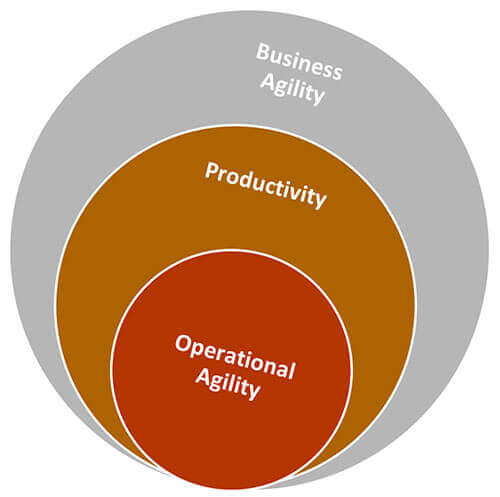As Covid-19 reaches all facets of life, global shared services are finding new ways to mitigate its long-term impact. Gartner’s recent Business Continuity Survey shows just 12 percent of organizations are highly prepared for the impact of coronavirus. In the face of Covid-19, the business continuity preparedness and disaster recovery measures have proven largely ineffective, especially for shared services centers (SSCs) or global in-house centers (GICs) operating at the forefront of business services. It is estimated that 75 to 80 percent of Fortune 500 companies are using some form of shared services – whether in-house or outsourced. The traditional operational model seems to have fallen short in places, in light of the weaknesses brought out during the pandemic. It is clear that shared service leaders need to transition their units on to a more resilient operating model that can best protect their people, serve their customers and secure business support for the future. During times of crisis, business process operations - the core engine in a company - is more important than ever. Business process functions include finance, supply chain, procurement, human resources, marketing, sales and customer operations; and industry-specific services, such as healthcare, insurance, banking, etc.
Complex and business-critical services that are managed by global operations teams need to be reassessed and restructured if they are to continue to serve and grow their enterprises, especially post Covid-19. Probably the underlying question is how do we maintain business as usual when most of the workforce is expected to work remotely - with limited access to the office and face-to-face interactions? Considering such challenges, the need for tighter controls with remote working arrangements and automated/ digitalized service delivery has never been more imperative.
Technology and Leadership
The world is now operating in a digital era, with digitalization set as a basic expectation of consumers and businesses alike. Covid-19 has created an imperative for companies to reconfigure their operations and provided an opportunity to transform them. However, automation is not a nirvana solution for fixing every wrong in the current situation. It can help cover process gaps, where individuals working from home are unable to carry out the processes due to technical or access restrictions or the processing speed has been adversely impacted.
Automating transactional processes and focusing on value-led, proactive operations, driven by data and analytics, can reduce stress on operations.
It can help processes develop the capability to operate critical business functions during emergency events and support access and interfaces with key tools and applications. In the absence of on-site interaction and communication, it can also be used to support employees with questions relating to internal processes and meeting needs. For the remote-work model to succeed, companies need to embrace agility at a holistic level by redesigning traditional BCPs with a more dynamic approach. This requires a blend of business strategies and technologies to create sustainable long-term value for the business.
Empathetic leadership and communication are two key areas that aid human resilience in such difficult times, as the leadership’s ability to respond to these emerging risks is critical to their organization’s success. Based upon the findings of a new global analysis by Odgers Berndtson, a leading global executive search firm, only 15 percent of business executives worldwide have confidence in their company’s top leadership to successfully manage disruption, including unexpected events like pandemics, technological advances, shifting demographics and climate change. The lack of confidence is striking, as 95 percent of executives believe that managing disruption well is critical for companies to succeed in turbulent times. The analysis also identifies the qualities and traits senior executives need most to thrive in changing times. "The quality of leadership has never been more important," says Kester Scrope, Chief Executive Officer of Odgers Berndtson.
Facing the Challenges at ESAB
ESAB is a global manufacturer and a recognized industry leader of welding and cutting solutions, delivering product and process innovations to serve the worldwide marketplace. ESAB’s shared service unit, also known as Global Business Services, provides high-quality services and end-to-end customer solutions to both our business partners and end customers across finance, supply chain and technology. The vision is to be a truly world-class, centralized organization supported by an empowered team that proactively focuses on customer needs and generating cost efficiency, business value through CPI initiatives, standardization efforts and automation.

At ESAB SSC, the shift created by the pandemic was indeed quite overwhelming as it led to the single largest migration of people to a work-from-home model. The key challenges faced were in ensuring productivity, business continuity, and operational agility.
However, adopting a distributed global services model, high performance can be delivered anytime, anywhere while taking advantage of new technologies to tackle the challenges that go beyond ‘keeping the lights on’.
The SSC operations teams have successfully enabled data, intelligence and insights to be available in an instant, wherever and whenever they are needed. This is done by using leading workforce solutions along with data mining and robotics process automation platforms that help to become more intelligent and to build business resilience. All actions taken were towards making the SSC both agile and business-focused – to be in line with the organization’s overall business continuity plan. A bonus was that working from home also reported greater efficiency as lesser logged-in hours were observed than at the office.

it also boosted employee satisfaction as they indicated a variety of benefits from working from home, including – no commute, flexible schedule, greater satisfaction, lesser supervision and fewer distractions.
The Need for Human Centricity
Automation has already become the next paradigm shift in business, just waiting to happen. The current crisis has shown how important it is to be flexible, proactive, and to respond quickly while investing in intelligent solutions. It has become a quintessential aspect of business continuity. Sustained business continuity and success will come to rely increasingly on more human-focused experiences, continually adapting to the latest technologies. Leading companies are introducing human + machine models, where most routine tasks are automated and everyone is a knowledge worker with access to insights, enabling them to manage difficult situations.
Accenture’s Tech Vision 2020 states – 76% of executives agree that organizations need to dramatically reengineer the experiences that bring technology and people together in a more human-centric manner.
By creating a human + machine workforce, employees can be reskilled and redeployed to ensure seamless operations, supported by analytics, AI and real-time monitoring. Although digitalization will have a great impact on transactional and repeat processes, the human workforce is likely to focus primarily on solving complex problems and exceptions that are unable to be resolved by the machine. As a leading research firm, Horses for Sources (HfS) says, “If there’s ever been a time, we needed a digital workforce to augment humans, it is now.”
In Summary
Is automation the silver bullet to tackle a global pandemic like Covid-19 and boost our business services resilience? We do not know – yet. The answer might be in how automation scales up as businesses make changes to conquer the challenges and make the most of the opportunities associated with remote working. The pandemic has accelerated trends that were already in place. The use of digital solutions can assist in increased business resilience and drive growth during a time when available manpower and traditional ways of working are being significantly disrupted. It can prove to become a resilient, scalable, and adaptable business operating model to support ongoing operations, both during and post the Covid-19 period.
ABOUT THE AUTHOR

Vijay is a Shared Services and GBS leader with 15+ years of experience building, growing and operating shared services organizations, as well as International Clients/Processes in the Consulting sector, Outsourcing Industry from larger MNCs. He currently heads the GBS Site in Chennai for a multi-platform diversified industrial company with a goal to build a world-class global enterprise focused on delighting its customers and dedicated to continuous improvement leveraging the power of the proven Colfax Business System (CBS), which is based on the Danaher Business System and the Toyota Production System, as this pursuit of excellence continues every day towards making a positive impact; improving the lives of their customers around the world.



 Ask an Expert
Ask an Expert



